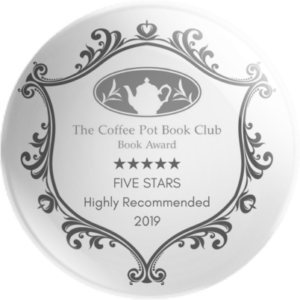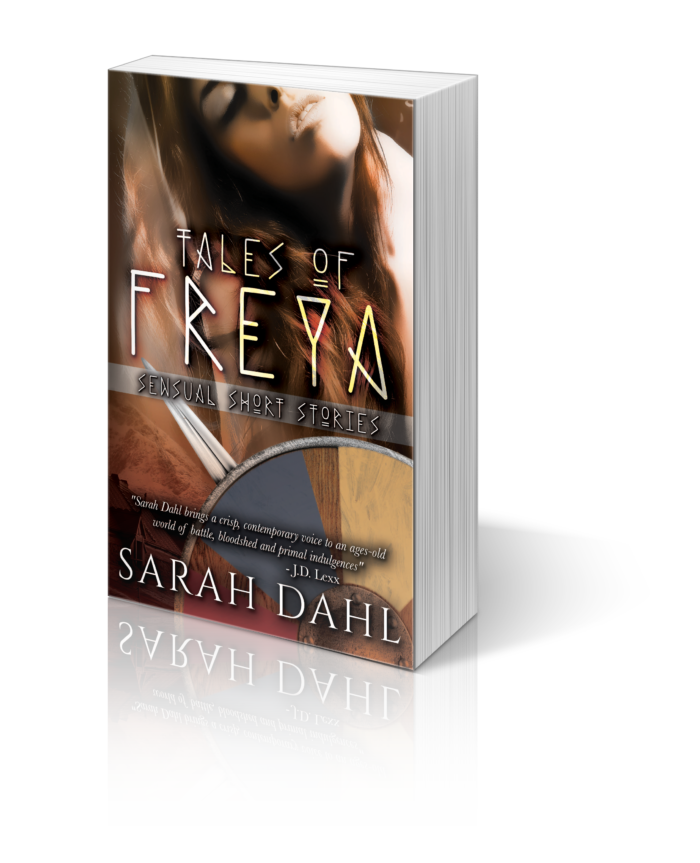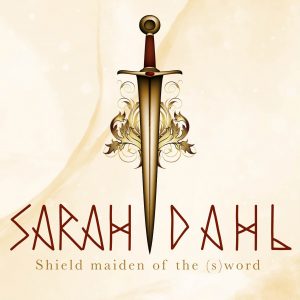The question of my genre — Part 2
So here comes PART 2 of this post:
Where do I fit in when it comes to genre, and if I have preferences, where do they stem from?
— UPDATE —
While I do NOT write anything that falls under ‘fanfiction’ (to pigeonhole genres again, which I hate) anymore, I cut my teeth on it. How I ended up with my current ‘genres’ is explained way down here and here.
For the very reason that I might be misunderstood, I started by stating:
I’ve been thinking hard whether to include the REAL beginnings of my writing. I claim I’ve always written fiction, made up stories on paper, often accompanied by drawings, especially as a kid. But when and how did I come back to it after the creative break later school and University years demanded?
Fanfiction is the answer. And BAM, I get that cringe-worthy feeling, omg, ‘fanfiction’, what serious genre is THAT? I’m doubting myself there. But truth is: I slipped back into writing — and loads of it! — ten years ago, via a fangroup for a certain … ahem … Scandinavian … uhm … male … well … singer. OK, ok. He grew older, I grew older, we kind of went our separate ways. But he — or rather his female fanbase — started it.
I began to write short stories using the pictures of him as a template. I used his image as basis, like a lump of clay that I then formed into something else, something with a different shape and meaning. At some point he wasn’t even a singer or artist anymore, he became all kinds of protagonists (including a biker, undercover agent, farmer, soldier … and historical Viking). My GREATEST motivation came from the eager, waiting audience. They commented, criticised, and pushed my boundaries. I improved, and rapidly. I wrote more and more. I tried different things. So yes, such a group and even the ‘genre’ can be so valuable! The feedback was not only about the exciting characters and storyline, but also the writing as such. Of course, we all, including myself, were just amateurs, fangirling away without boundaries. But hey — it spurred me on, made writing and making up stories, developing characters and plots my major fun occupation!
And one day, I decided to go backwards in time. Make it historical. Do the characters as Vikings. Add that exotic, rustic flavour of a past long gone. And suddenly, instead of steamy short stories, I created one that took on its own life. Fenja. The mention of that romance saga (it has developed into a monster of several books spanning generations of a Viking Age family) still makes my old readers go “aaah, yes! Fenja! God, I love her! You HAVE to publish that one!”
So I’ll obey that wish in the near future, as it is my most worthy project for a serious rewrite. Not only for nostalgic reasons. I developed so many characters, plot lines, included scenes of household tasks, courting, duelling, fighting, feasting, making love, marrying (in that order, yes, to defy specific genres), having a family, losing loved ones … it goes on and on. From today’s more experienced perspective I’m scared to go look at it again, and haven’t done yet, but hey: it has a sturdy framework, I’m assured. Might as well try my hand.
So what was the outstanding feature of that saga that kept the audience hooked, excited to the point they nagged me about new chapters? To the point they shut out the world so they could read and enjoy the story alone or even with a happy partner? Not just the male lead. It was:
- Engaging characters they wanted to see develop, get together, readers could relate, because they were so “normal” in their struggles and desires
- The historical setting of the Viking Age, with all the research I had to put in, the period details that made the ancient world come to life, so they SAW the people in that world and understood them
- The emotion. Yes, I’d written erotica before, see above, but in that story it was more real-life-romantic making love kind of stuff, down-to-earth as I saw them in that era, if you can follow me there. The reader should go “oh YES! Finally!” and re-read it for the emotional satisfaction. And they didn’t get it out of their heads — I’m told FOR YEARS after they read some scenes! So:
- The emotion intertwines with the sex. It is not sex for the reader’s satisfaction or however else the ‘genre’ of erotica is defined. I don’t care. I want “real people” (well, long dead, from today’s perspective, and living quite different lives, but just as shy, flawed and wonderful as we all are!). Readers shouldn’t look up to and admire the flawless beauty and strength of my people, and how perfect they are, but see their true core, relate to them!
All I can say is that, having read a fair share of erotica for research only (yes!) I must say: I don’t consider myself an erotica writer. I don’t fit in there and don’t feel I belong, although, somehow, I write love and sex and anticipation and the whole game — without turning away my camera once the couple’s kisses grow deeper. BUT I would never put a picture of a half-naked, muscular male holding a sweet heroine with heaving bosom in his arms on any of MY covers!
My heroes may be beautiful too, and be passionate and strong, but I’d always keep them fully dressed on a cover AND in 90% of the novel, because: Their physique and even their passion is NOT what the complete story is about! As it is not in real life, I hope. There is (emotional) depth and a plot that fans out. A family saga with struggles, historical events, antagonists, dangers and death around the courting, romancing and coupling. I want to show lives, not just bed-scenes.
So what genre is that? Romance? Or erotic romance? romantic erotica? Historical Viking Age erotic romance saga? Do I HAVE to know all definitions and find me a box for pigeonholing? Going on, I’d end up with one of Chuck’s definitions in Part 1 😉 If you want Vampires, BDSM or dinosaurs, you have to look elsewhere!
So I know where I DON’T feel I belong — which is plain erotica. I mean, desire is part of our human nature and I make use of that longing in readers. But it has to be realistic, emotional, should be mind-blowing lovemaking that lasts and makes readers go read it again. With an inspiring couple and a solid story: I want them to be together in a way that makes them and the participants (the readers!) go WOW! But the audience should always want to know how the story continues and to just accompany the couple through their lives.
This is not achieved by technique, but emotion. So the most defining feature of my romance stories is the emotional involvement, the quality of anticipation, the very important seduction that gives away MOST of the protagonists’ characters and the quality of their dreams, hopes and possible future. I put all that in there, pulling it together in their passion.
Let’s talk about my short stories now: In my historical romance/erotica shorts, the(ir) climax is literally the resolution of the story, the point of ultimate unison, satisfaction, pleasure and happiness, that also reaches the readers. And from there, just an outlook follows. We’ve seen the long built-up, reached the climax (well, hopefully they did) and have them glued together, so all that follows is possibilities. It’s where the second story would start, they can decide to run/flee/be together, because: there wasn’t a point to the story if they didn’t make their way. So we, readers and writer, let them go. In almost all my historical or contemporary erotica short stories I end with such an outlook.
But not so in the novels: In Fenja mentioned above, I took it from there. They had only just started, had to build a future together, overcome more obstacles. Had a family and were thrown into more dangers, but only to have them be able to unite again in that satisfying way. I hope this is what came across with those eager readers years ago.
And today? What’s the genre, what’s the plan?
My latest projects are listed on my Homepage. I can’t seem to get around historical settings, I love the research, I love my Vikings, I love to place readers in those exciting unknown surroundings (and the German serialised novel set in the Eifel is so rustic and honest it’s equally fascinating). And I want readers to become familiar with the era and feel at home there in the stories. Welcome them into a world that ceased to exist, but which I hope to make come to life again, for them (and for me), adding the flavour of the new experience in the old.
Why Vikings? Haha, see above, that artist happens to be Norwegian (hint, hint) and I always had a crush on Scandinavia. It fascinates me, rugged nature, men and women, in their attitudes and attires, and especially where they came from, how their world was so different and cultivated in contrast to what most people think about the Vikings today. Thankfully, a GREAT series on History Channel changed that perception, to some extent, PLUS makes for plenty of inspiring characters, landscapes and adventures!
Why romance/erotica? I answered that above, I hope. I see two (or more) people, their desires, their dreams and hopes, the longing for love. I give them (and the reader) that, sooner or later. Readers said that the great strength and unique feature of MY romance is the emotional depth and mind-blowing lovemaking that goes WITHOUT the usual vocabulary. This is a great compliment, as I work so hard to achieve lust without stereotyped, cringe-worthy catchwords (I’ll go into more detail about how to write steamy scenes without having to use the ‘gutter’ of porn vocabulary or stereotyping). Steamy with style. Taste. Nothing that would derail the built-up, even at a certain single word. They all have to keep in line with my own style requirements.
In other stories, I leave the intimacy out and do an adventure/friendship/character and setting study. Like in the historical Eifel novel. Strange that this one — containing NO romance — is the first one that is published. This one is not about love, but friendship and bravery. About coming to terms and out of your shell. About the harsh circumstances that make my protagonists bleed (metaphorically) but also work hard and overcome all obstacles. It is about development and growth. There’s also loads of humour in there. Again, I have NO clue how to label the piece. Historical, YA-character development-adventure novel? Feck that, as the Irish say.
It is not finished yet, and I’m simultaneously working on my Viking Romance Trilogy (see Homepage) atm, partly with my editor now. So writing is always juggling many different stories and genres and story types. If I learned one thing, it’s to multitask and experiment.
And to not rely on any definitions of genre. My latest draft is a fantasy/historical fiction piece, working title Moonstone Hall, which I started with last year’s NaNoWriMo. It is resting at the moment, waiting to be re-evaluated.
And the decision to work on it or not will not be restrained by any genre considerations!
Whether you’re a reader or a writer, it’s fine to have a genre as first impression, as first definition, but each story deserves a closer look WITHOUT any stereotyping.
So to wrap Part 1 and 2 up:
Keep an open mind, will ya? Don’t box stories without good reason. We try to be artists, not just entertainers, and for that reason boxes don’t help. We still try our best to satisfy expectations. As Chuck Wendig says: ART HARDER! No matter what they call the result.
Please let me know what impression my attempt to explain my own writing left! I’m forever curious to get your opinions and own experiences! What is your ‘genre’ or variant of that? What do you focus on? How did it evolve? Tell us below!




Comments (2)